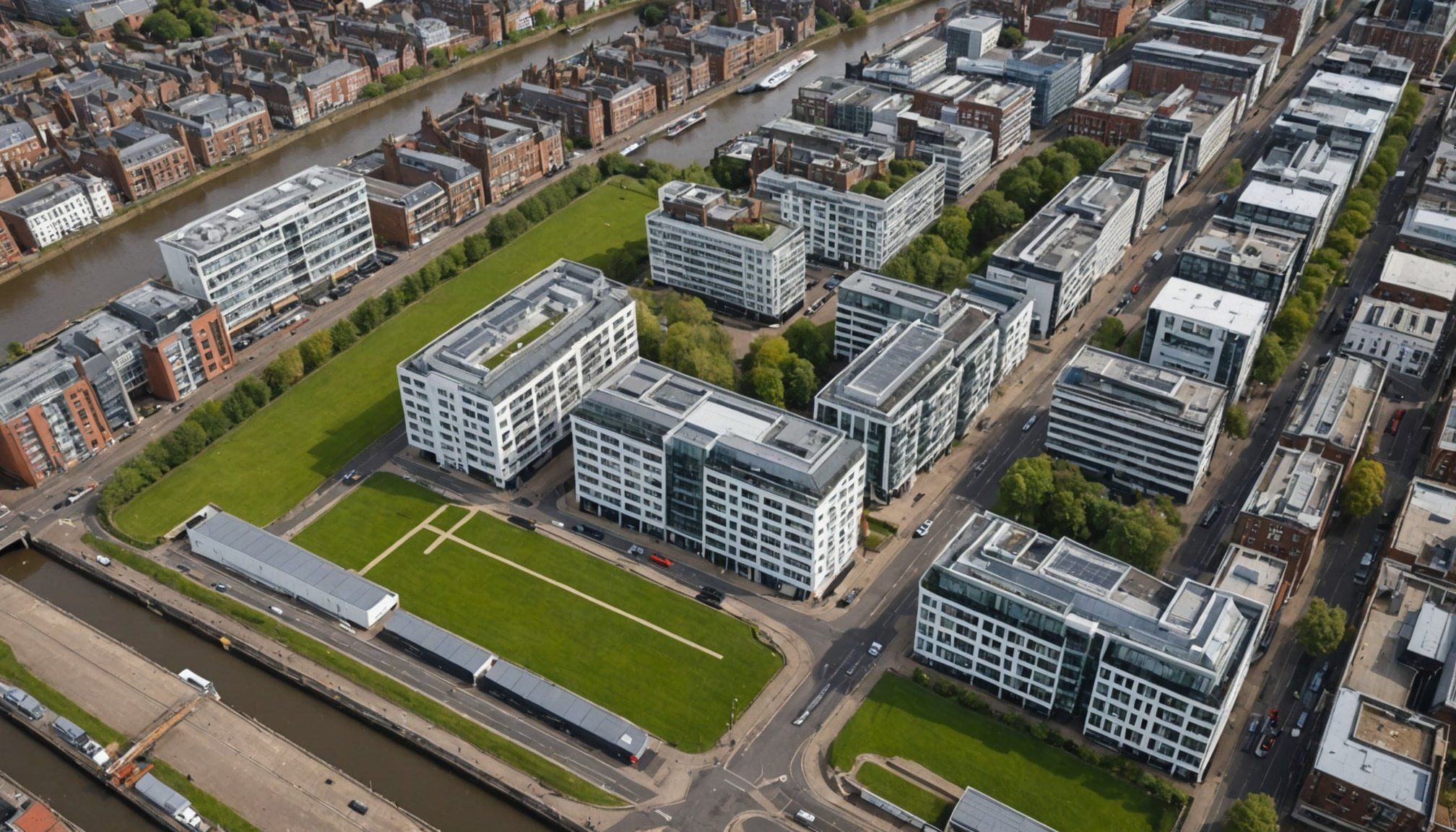Definitive Guide to Conducting Environmental Impact Assessments for UK Real Estate Projects: A Comprehensive Step-by-Step Overview
Understanding the Importance of Environmental Impact Assessments
Conducting an environmental impact assessment (EIA) is a crucial step in the planning and development of real estate projects in the UK. This process helps identify and mitigate the potential environmental effects of a project, ensuring that development is sustainable and compliant with regulatory standards.
Why EIAs are Necessary
EIAs are mandatory for certain types of projects, particularly those classified as nationally significant infrastructure projects (NSIPs) under the Planning Act 2008. These assessments are essential for several reasons:
Additional reading : Transforming Birmingham’s Industrial Spaces into Inviting Homes: Key Legal Insights for Aspiring Homeowners
- Compliance with Regulations: EIAs help developers comply with environmental regulations and standards set by the UK government. For example, the new environmental outcome reporting (EOR) regime, which is set to replace the existing framework of strategic environmental assessments and environmental impact assessments, emphasizes the need for thorough environmental evaluations[1].
- Risk Management: By identifying potential environmental impacts early, developers can implement measures to minimize risks and avoid costly delays or legal issues.
- Sustainability: EIAs promote sustainable development by considering the long-term effects of a project on the environment, including biodiversity, habitats, and natural resources.
Step-by-Step Guide to Conducting an EIA
Initial Screening and Scoping
The first step in conducting an EIA is to determine whether the project requires a full assessment. This involves screening the proposal to identify potential environmental impacts.
- Screening Questions: Use the Green Book screening questions provided by HM Treasury to assess the likelihood of effects on land use, atmosphere, water bodies, and wildlife. For example:
- Is the proposal likely to have any effects on the use or management of land in the UK?
- Is the proposal likely to affect the atmosphere in any way?
- Is the proposal likely to affect any type of inland, coastal or marine water body?[2]
Scoping the Assessment
Once it is determined that a full EIA is necessary, the next step is to scope the assessment. This involves identifying the key environmental issues that need to be addressed.
Have you seen this : Discover Smart Strategies to Conserve Water in UK Homes Efficiently
- Stakeholder Consultation: Engage with stakeholders, including local communities, statutory consultees, and environmental groups, to gather information and feedback on the potential impacts of the project.
- Environmental Baseline Study: Conduct a baseline study to gather data on the existing environmental conditions of the site. This includes assessing habitats, species, and natural resources.
Conducting the Environmental Impact Assessment
Data Collection and Analysis
This phase involves collecting and analyzing data to assess the potential environmental impacts of the project.
- Impact Assessment: Evaluate the potential impacts on various environmental components such as air quality, water quality, noise, and biodiversity. For example, assessing how a new construction project might affect local wildlife habitats or increase carbon emissions.
- Mitigation Measures: Identify and propose mitigation measures to reduce or eliminate adverse environmental impacts. This could include implementing green infrastructure, such as green roofs or urban green spaces, to mitigate the urban heat island effect[2].
Example: Assessing Biodiversity Impact
When assessing the impact on biodiversity, consider the following steps:
- Habitat Assessment: Identify the types of habitats present on the site and their condition.
- Species Survey: Conduct surveys to identify protected species and their habitats.
- Impact Evaluation: Evaluate how the project might affect these habitats and species.
- Mitigation Plans: Develop plans to minimize harm, such as creating biodiversity net gain through habitat restoration or creation of new habitats.
Preparing the Environmental Statement
The environmental statement is a comprehensive document that presents the findings of the EIA.
Key Components
- Executive Summary: A brief overview of the project and its potential environmental impacts.
- Environmental Baseline: A description of the existing environmental conditions of the site.
- Impact Assessment: A detailed assessment of the potential environmental impacts.
- Mitigation Measures: A description of the measures proposed to mitigate adverse impacts.
- Monitoring and Management Plan: A plan for monitoring and managing the environmental impacts during and after the project.
Consultation and Decision Making
Public Consultation
Public consultation is a critical part of the EIA process. It involves sharing the environmental statement with the public and stakeholders to gather feedback.
- Consultation Report: Prepare a report summarizing the feedback received and how it has been addressed.
- Narrowing Down Disagreements: As proposed in the new planning reform working paper, all parties should work to narrow down areas of disagreement during the pre-application stage to mitigate unresolved issues later in the process[1].
Decision Making
The final decision on whether to approve the project is made by the relevant authorities, such as government ministers for NSIPs.
- Development Consent Order (DCO): For NSIPs, a DCO is required. The new proposals suggest that developers may be able to opt out of the DCO process if it is deemed disproportionate to the project’s value[1].
- Judicial Review: The government is also considering reforms to the judicial review process to make it harder for campaigners to disrupt major infrastructure projects, ensuring that critical projects can proceed with greater certainty[1].
Implementing and Monitoring the Project
Construction Phase
During the construction phase, it is crucial to implement the mitigation measures identified in the EIA.
- Environmental Management Plan: Develop and implement an environmental management plan to ensure that the project is executed in accordance with the proposed mitigation measures.
- Monitoring: Regularly monitor the environmental impacts during the construction phase to ensure compliance with the environmental statement.
Post-Construction Monitoring
After the project is completed, ongoing monitoring is necessary to ensure that the environmental impacts are managed effectively.
- Long-Term Monitoring: Implement long-term monitoring plans to assess the effectiveness of the mitigation measures and identify any unforeseen impacts.
- Adaptive Management: Be prepared to adapt management strategies based on the findings of the monitoring program.
Practical Insights and Actionable Advice
Cost-Effective Strategies
Conducting an EIA can be costly, but there are cost-effective strategies to consider:
- Early Engagement: Engage with stakeholders early in the process to avoid costly delays.
- Streamlined Processes: Utilize streamlined processes and tools, such as the pre-application service provided by the Planning Inspectorate, to reduce the time and cost associated with the EIA process[1].
Ensuring Compliance
To ensure compliance with environmental regulations, developers should:
- Stay Updated: Keep abreast of the latest regulations and guidelines, such as the new EOR regime.
- Collaborate with Experts: Collaborate with environmental experts and consultants to ensure that the EIA is thorough and compliant.
Conducting an environmental impact assessment is a complex but essential process for real estate projects in the UK. By following the steps outlined above, developers can ensure that their projects are sustainable, compliant with regulations, and minimize adverse environmental impacts.
Quotes from Experts
Robbie Owen of Pinsent Masons emphasizes, “Streamlining the consenting process for nationally significant infrastructure projects is a central plank of the government’s planning regime reforms, which it is widely acknowledged are essential to enable development and, in turn, promote growth.”[1]
Iain Gilbey adds, “National policy in the NPPF already directs development to sustainable locations, well located for public transport, so it will be interesting to see how far the government intends to reinforce its ‘default answer’ approach to housing development in such locations.”[1]
By understanding and adhering to these guidelines, developers can navigate the EIA process effectively, ensuring that their projects contribute to sustainable development and environmental protection.
Table: Key Components of an Environmental Impact Assessment
| Component | Description | Relevance |
|---|---|---|
| Executive Summary | Brief overview of the project and its potential environmental impacts | Provides a concise summary for stakeholders |
| Environmental Baseline | Description of the existing environmental conditions of the site | Establishes a baseline for impact assessment |
| Impact Assessment | Detailed assessment of the potential environmental impacts | Identifies and evaluates potential impacts |
| Mitigation Measures | Description of the measures proposed to mitigate adverse impacts | Reduces or eliminates adverse environmental effects |
| Monitoring and Management Plan | Plan for monitoring and managing the environmental impacts | Ensures ongoing management and mitigation |
| Consultation Report | Summary of feedback received and how it has been addressed | Demonstrates stakeholder engagement and feedback incorporation |
Detailed Bullet Point List: Steps in Conducting an EIA
- Initial Screening:
- Determine if the project requires a full EIA.
- Use Green Book screening questions to assess potential impacts.
- Scoping the Assessment:
- Identify key environmental issues.
- Engage with stakeholders.
- Conduct a baseline study.
- Data Collection and Analysis:
- Evaluate potential impacts on various environmental components.
- Identify and propose mitigation measures.
- Preparing the Environmental Statement:
- Write an executive summary.
- Describe the environmental baseline.
- Present the impact assessment.
- Outline mitigation measures.
- Develop a monitoring and management plan.
- Consultation and Decision Making:
- Conduct public consultation.
- Prepare a consultation report.
- Narrow down areas of disagreement.
- Obtain necessary consents (e.g., DCO).
- Implementing and Monitoring the Project:
- Implement the environmental management plan.
- Monitor environmental impacts during construction.
- Conduct long-term monitoring post-construction.
- Adapt management strategies based on monitoring findings.









